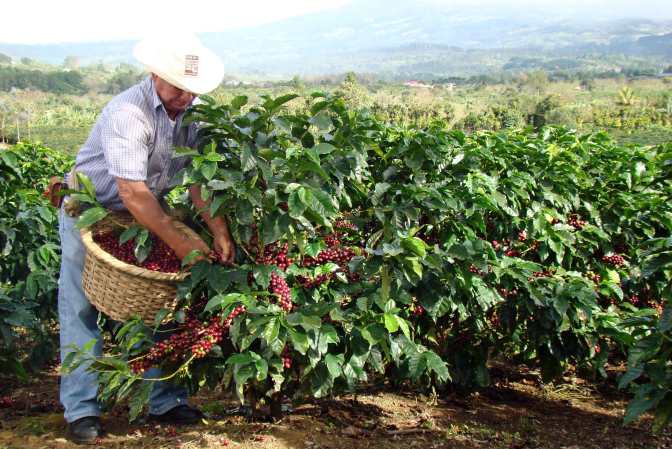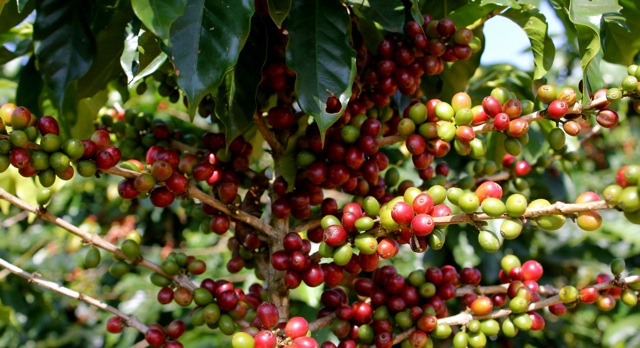I love traveling, and one thing I love doing while traveling is finding good coffee. I know it sounds a bit cliché, but come on! What’s not to love about drinking good coffee while traveling. One of the weirdest thing I’ve come across, is in a lot developing countries, where there is bountiful land that produces mass amounts coffee beans, in local people’s homes, they only drink instant coffee instead of the real deal. They themselves, plantation workers and locals, can’t afford to buy the coffee they produce in their own country. They export all of it out to countries like ours that take roasted and ground up coffee beans for granted. I always thought it was strange that they had such good coffee so readily available, yet they drink the cheap substitute. Anyways, on to why we’re really here.
If I want to still be able to travel and drink coffee, and if we want coffee to be conserving the environment instead of destroying it, then these studies are necessary to further understand how ecosystems around coffee plantations are doing. This study I’ve found aims to see any correlations between four different coffee plantation habitats and three different animal taxa; butterflies, ants, and birds, to see if coffee plantations provide a refuge of biodiversity or inhibit it.
In this study in the state of Chiapas, Mexico, specifically in the Soconusco Region which is a narrow valley between two mountains, they compared the species richness of the three taxa and four different habitats. The four habitats were forest, which was described as natural thick forest fragments, rustic coffee, which were areas with naturally growing coffee plants, diverse shade coffee, which were farms that had been integrated with other trees to provide a canopy of shade, and finally the intensive coffee, which were farms with extremely low density of share. Four sample points for each taxa were taken from each habitat and then compared to a separate region in southwest Mexico.

They set out taking sampling plots from each region for ants, butterflies, and birds. For ants, they put out tuna fish bait and waited 30 minutes and counted the amount of ants as well as counted the amount of species. For the butterflies they used standard butterfly traps in the understory, roughly one meter above the ground, as well as hanging in a tree nearby, and waited 8 days later, taking count of species diversity and amount. For the birds, they did point counts within 25m for 10 minutes. Overall, they found that the species richness there was a general decrease with the decrease of shade coverage in the varying habitats.
The results of this study did not give very clear patterns, but found general trends. Ants and butterflies decreased with a decrease in shade, and in one of the two sampling regions, birds showed this as well. With the number of ants, species richness did not change much between the habitats showing that ants are more resistant to habitat modification, and looking at butterflies, they are more sensitive to habitat modification. The species richness of the birds was found to be correlated to distance away from a forest, suggesting that the more forestation present, the higher species diversity there was. It is interesting to note that there was no significant data suggesting that there was any correlation between any of the taxa of animals. The results of the whole study generally show that the more shade that was given in a habitat the higher species diversity was found.

This has something to say for coffee plantations, that they can sustain the local ecosystem better with the added vegetation providing shade coverage amongst the coffee plants. When coffee is grown sustainably and responsibly, and tastes amazing, we all win, don’t we? So, I think it’s time to go enjoy a nice cup of coffee, don’t you?
Word Count: 646
Reference:
Perfecto I, Mas A, Dietsch T, Vandermeer J. 2003. Conservation of biodiversity in coffee agroecosystems: a tri-taxa comparison in southern Mexico. Biodiversity and Conservation. [Accessed February 21, 2016]. Vol. 12. Pages 1239-1252. Available from: http://deepblue.lib.umich.edu/bitstream/handle/2027.42/42405/10531_2004_Article_5096977.pdf?sequence=1&isAllowed=y
But is it more costly to the farmers to have shade-grown plantations?
LikeLike
Shade grown coffee plants do have a high yield, so on paper, the benefits seem to outweigh these costs, but in real life, that may not be the case. Something I should look further into. 🙂
LikeLike
There must be some reason that farmers are not growing shade grown coffee. Maybe they need an education in biodiversity
LikeLike
Good blog Ruth!
LikeLike
Farming is really weird sometimes, look out North America`s favouring of single crop growth over large areas, it depletes the soil and causes erosion but its the favourite… They need to listen to research more!
LikeLike
Ive found this in south east asia and south america too Ruth, so much coffee but they only drink instant coffee sludge. Awful! not conservation related but i think in most of these countries the spanish or french brought the coffee plants over but didn’t bring the proper technology and knowledge for roasting or preparing good coffee, and since good espresso machines are upwards of $1000, and roasters are expensive too, most coffee growing communities just done have the means to purchase them. However, it is part of the fun of traveling trying to source out a good cup of coffee 😉
LikeLike
Given that I have a coffee addiction as well this blog was super interesting. Thanks for a great blog:)
LikeLike
Great topic. I remember looking into some different ways for farming for a previous course. One technique that was used was the planting of trees in the rows of crops. The trees provided shade for the crops, and they also aided in rebalancing the water tables of the land. Maybe they could utilize this technique at coffee plantations.
LikeLike
Really interesting points you bring up! I thought the results were counter-intuitive. Thanks for sharing!
LikeLike
Really cool blog Ruth, let’s hope coffee farmers can perhaps be more educated about the benefits of having some kind of coverage to provide shade for their plants to have a “win-win” environmental situation!
LikeLike